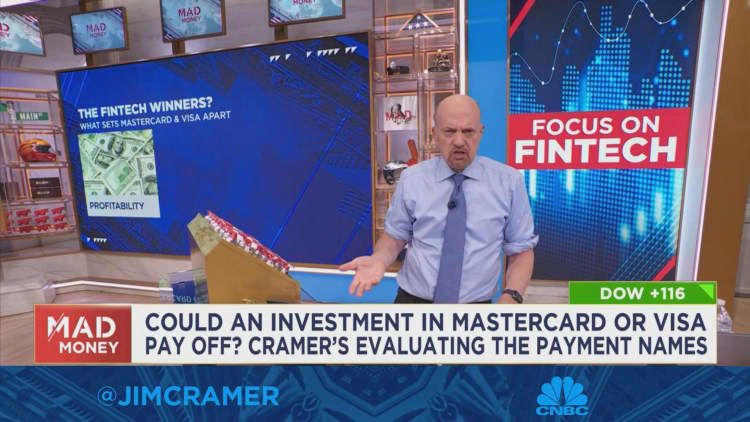[ad_1]
BARCELONA, SPAIN – MARCH 01: A view of the MasterCard company logo on their stand during the Mobile World Congress on March 1, 2017 in Barcelona, Spain. (Photo by Joan Cros Garcia/Corbis via Getty Images)
Joan Cros Garcia – Corbis | Corbis News | Getty Images
SINGAPORE — There isn’t enough justification for the widespread use of central bank digital currencies right now, which makes broad adoption of such assets “difficult,” Ashok Venkateswaran, Mastercard‘s blockchain and digital assets lead for Asia-Pacific, told CNBC.
“The difficult part is adoption. So if you have CBDCs in your wallet, you should have the ability for you to spend it anywhere you want – very similar to cash today,” said Venkateswaran on the sidelines of Singapore FinTech Festival on Wednesday.
A retail CBDC, which is the digital form of fiat currency issued by a central bank, caters to individuals and businesses, facilitating everyday transactions. This is different from a wholesale CBDC which is used exclusively by central banks, commercial banks and other financial institutions to settle large-value interbank transactions.
The International Monetary Fund has said that CBDCs are “a safe and low-cost alternative” to cash, with approximately 60% of countries in the world exploring CBDCs. However, only 11 countries have adopted them, with an additional 53 in advanced planning stages and 46 researching the topic as of June, according to data from the Atlantic Council.
“But [building infrastructure to facilitate that] takes a lot of time and effort on a part of the country to do that. But a lot of the central banks nowadays have gotten very innovative because they are working very closely with private companies like ours, to create that ecosystem,” said the Asia-Pacific lead.
Even then, Venkateswaran said consumers are “so comfortable using today’s type of money” such as paper money and coins, that “there isn’t enough justification to have a CBDC.”
Mastercard, the second-largest card network in the U.S., said last week it has completed testing of its solution in the Hong Kong Monetary Authority’s e-HKD pilot program to simulate the use of a retail CBDC such as electronic Hong Kong dollars.
Hong Kong’s CBDC sandbox facilitates the trial of minting, distributing and spending of e-HKD within the program.

A total of 16 companies across the financial, payments and technology sectors including Mastercard participated in the pilot. Mastercard’s rival Visa also took part in the project alongside HSBC Bank and Hang Seng Bank, testing the viability of tokenized deposits in business-to-business payments.
Venkateswaran cited Singapore as an example where the case for retail CBDC is not compelling enough as the city-state has a “very efficient” payments system.
Last year, the IMF’s deputy managing director Bo Li named Singapore and Thailand as the countries in Asia which have made “quick progress” by connecting fast payment systems, therefore lowering transaction fees for cross-border payments.
“There isn’t a reason for a retail CBDC [in Singapore] but there is a case for a wholesale CBDC for interbank settlements,” said Venkateswaran.
On Thursday, Singapore’s central bank announced it will be piloting the live issuance and use of wholesale CBDCs from 2024.
During the pilot, the Monetary Authority of Singapore will collaborate with domestic banks to test the use of wholesale CBDCs to facilitate domestic payments, said the managing director of the Monetary Authority of Singapore, Ravi Menon.
It really depends on the need of the country or what problem they are trying to solve, said Mastercard’s Venkateswaran.
It won’t work “if you’re only trying to replace your existing domestic payment network,” he said.
“But if it’s a country where the domestic payment network is not as robust, it may make sense to have a CBDC.”
[ad_2]

